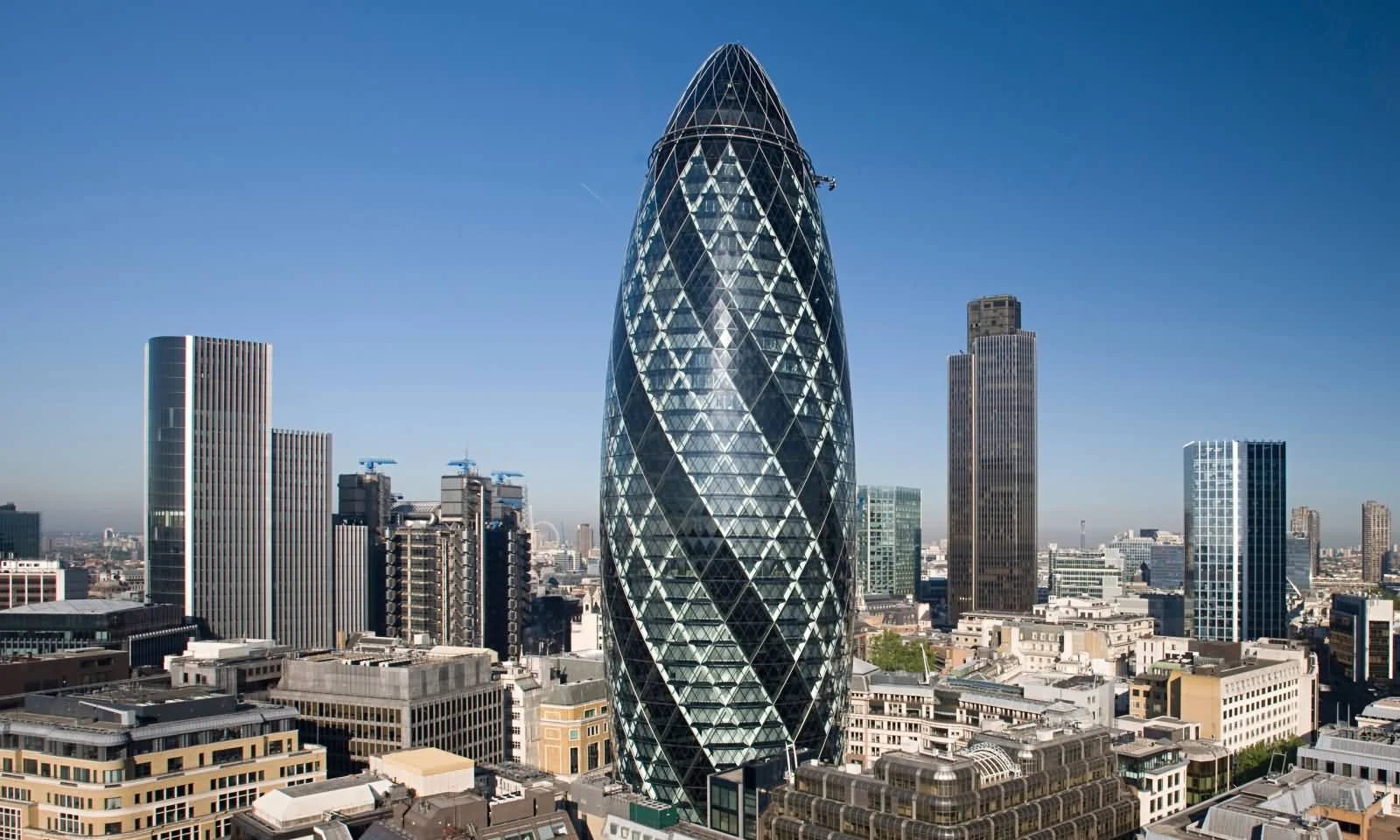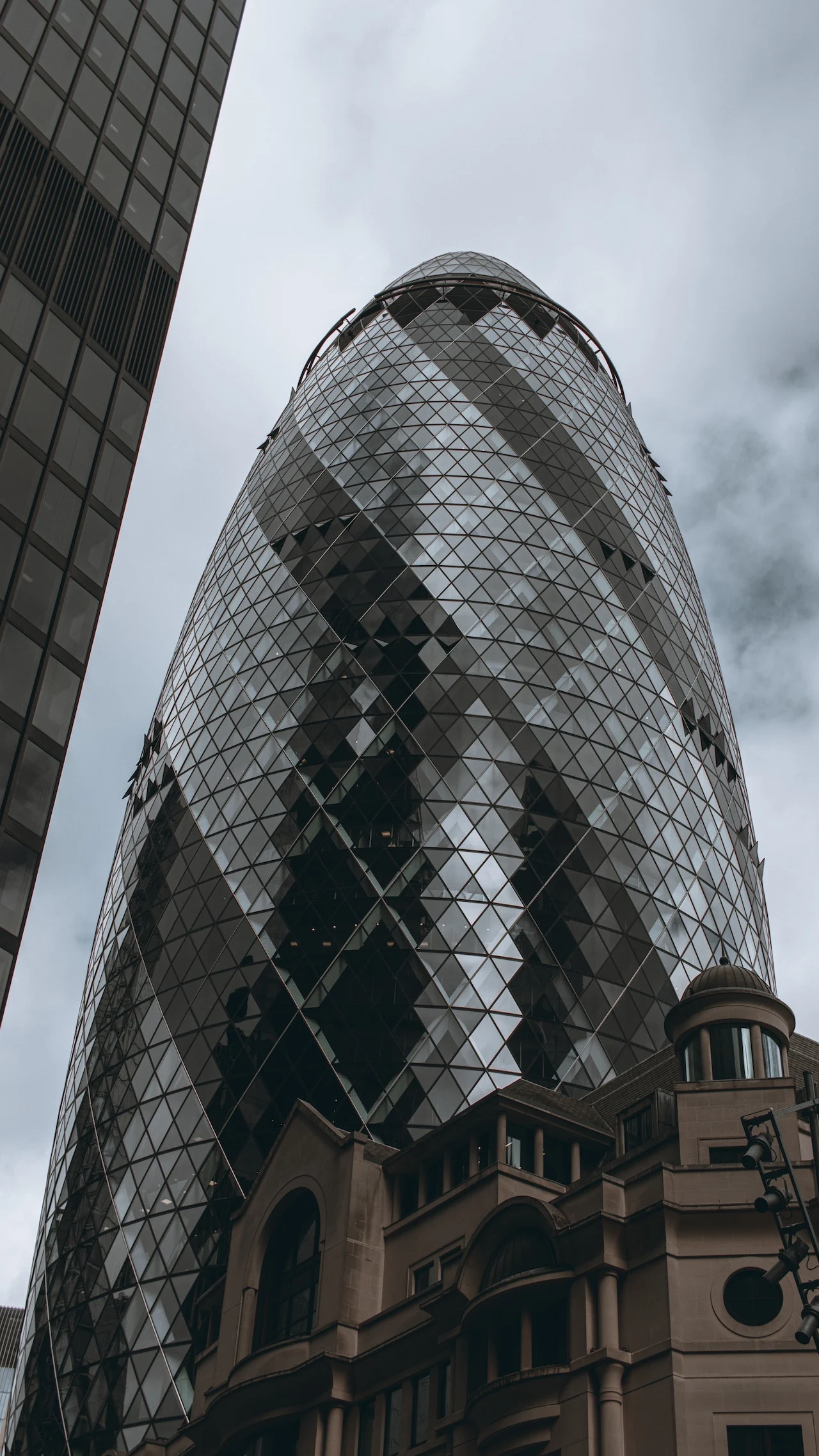Contemporary Architecture Style: Gherkin Building by Norman Foster
Norman Foster's Gherkins Building Exemplifies Contemporary Architecture Style
The Gherkin Building in London is one of the most iconic and landmark architectural buildings in the city. The building was designed by the world-renowned architect, Norman Foster and completed in 2004. It is 180 meters tall and has 41 floors, is used as retail and office space, and has a restaurant and bar on the top floor.
The Gherkin Building has become a popular tourist attraction and one of the most photographed buildings in London and has also been used in several films and television programs. The construction is considered a prime example of contemporary architectural style. It is situated in the heart of the city and provides panoramic views of the skyline.
If you are interested in learning more about the Gherkin Building and its architectural style, then keep reading!
 |
| Gherkins Building by Norman Foster, Photo by wallpapercave.com |
Contemporary Architecture Explained | Defining Contemporary Style
Contemporary Architecture is a broad term that encompasses a wide range of styles and approaches to architectural design that emerged in the late 20th century and continues to evolve in the 21st century. It often emphasizes innovative and sustainable building materials and techniques, as well as a focus on functionality, minimalism, and open spaces.
Contemporary architects also prioritize the integration of buildings into their natural or urban environments, as well as the use of technology and digital tools in the design process.
"My description of Contemporary Architecture is that I'm able to take the old concepts of traditional architecture and interpret them in a modern way. I think that most architects will agree that there's a lot to be learned from traditional architecture whether you like Contemporary Architecture or not," says a design expert at Development One, Inc., an architecture firm based in California, United States.
For further information about the topic, visit and read the interesting article titled "Contemporary Architecture Explained in a Simple Way"; it also includes a related video.
Is the High-tech Style the same as the Contemporary Architecture Style?
The terms "high-tech" and "contemporary" are often used interchangeably to describe modern architectural styles, but they are not exactly the same and that's why:
Contemporary architecture refers to a broad range of architectural styles being developed today. It is characterized by a focus on sustainability, functionality, and a minimalist aesthetic. However, it can take many forms, including organic, minimalist, and futuristic styles.
On the other hand, high-tech architecture is a specific subset of contemporary architecture that emerged in the 1970s and 1980s. It is characterized by the use of industrial materials such as steel and glass, and an emphasis on technological innovation and functionality. High-tech architecture often features exposed structural elements and mechanical systems and seeks to create buildings that are both efficient and aesthetically striking.
So while high-tech architecture is a type of contemporary architecture, not all contemporary architecture is high-tech in style. Additionally, the high-tech has a more specific set of design principles and aesthetic features that differentiate it from other contemporary architectural styles.
N. Foster's Quick Bio History
Norman Foster is one of the world's most renowned architects, known for his innovative and sustainable building designs, which have earned him numerous awards and accolades throughout his career. One of his most iconic designs is the Gherkin building in London, the topic of our post today, which stands tall in the city's skyline, It has become a symbol of modern architecture.
Foster is a British architect born on June 1, 1935, in Manchester, England. He studied architecture at the University of Manchester and then at Yale University. In 1967, he founded the architectural firm Foster Associates, which is now known as Foster + Partners. The firm has completed many notable projects around the world, including the Hong Kong and Shanghai Bank headquarters in Hong Kong, the Reichstag in Berlin, and the Millennium Bridge in London
Foster has received numerous awards such as the Pritzker Architecture Prize in 1999, which is considered the highest honor in the field of architecture. He has also been knighted by the British monarchy and awarded the Order of Merit, one of the highest honors bestowed by the United Kingdom.
Foster's designs often incorporate elements of sustainability and energy efficiency, and he is known for his use of cutting-edge technology in his buildings. His work has had a significant impact on the field of architecture and continues to inspire and impress new generations of architects.
Some Architectural Characteristics of the Gherkin's Building
The design of the building is unique and has become an iconic symbol of London. The building is an example of innovative and creative architecture. It is one of the most photographed buildings in the city and has been featured in many films and TV shows. If you are visiting London, make sure to take a photo of the Gherkin Building!
The Gherkin, officially known as 30 St Mary Axe, is a commercial skyscraper in the heart of London's financial district. The building's unique shape is a result of its circular plan and a tapering form that narrows towards the top.
One of the most striking features of the Gherkin is its glass façade. The building is wrapped in a double skin of curved glass, which not only gives it a distinctive appearance but also serves several functional purposes. The outer layer of glass acts as a shading device, reducing the amount of solar heat that enters the building and thus reducing energy consumption. The inner layer of glass provides thermal insulation, which helps to keep the building warm in the winter and cool in the summer.
The building's interior is just as impressive as its exterior. The central atrium is a stunning space that stretches the full height of the building, providing natural light and ventilation to the offices on each floor. The atrium also features a series of spiral staircases that wind their way up through the building, providing a unique and dynamic visual experience.
 |
| Inside the Gherkin's building, Photo by bing.com/images/ |
Gherkin's sustainable design features are another notable aspect of the building. It has been awarded several sustainability certifications, including an 'Excellent' rating from BREEAM, a leading sustainability assessment method for buildings. The building incorporates a range of energy-saving technologies, such as a high-efficiency cooling system and a rainwater harvesting system that collects and recycles rainwater for use in the building's toilets.
Facts about the Gherkin Building You Probably Missed
The Gherkin, also known as noted earlier, as 30 St Mary Axe, is a distinctive skyscraper located in the heart of London's financial district. Here are some architectural facts about this iconic building:
1. Design and Construction: The Gherkin was designed by renowned British architect Norman Foster and his firm Foster + Partners. The building was constructed between 2001 and 2003 and officially opened in 2004.
2. Unique Shape: Gherkin's most recognizable feature is its unique shape. The building tapers towards the top, with a curved glass façade that gives it its distinctive "pickle" shape. This design was chosen to minimize the building's footprint on the ground while maximizing its floor space.
 |
| Another breathtaking picture of the fascinating Gherkin's building, Photo by Dominykas |
3. Height and Size: The Gherkin is 180 meters (591 feet) tall and has 41 floors. Its total floor area is approximately 47,000 square meters (506,000 square feet).
4. Energy Efficiency: The Gherkin was designed with energy efficiency in mind. Its distinctive shape helps to reduce the amount of direct sunlight that enters the building, reducing the need for air conditioning. The building also has a series of spiraling vents that draw fresh air into the building and help to regulate its temperature.
5. Sustainability: The Gherkin has been awarded many sustainability certifications, including an Excellent rating from the Building Research Establishment Environmental Assessment Method (BREEAM) and a LEED Gold certification from the U.S. Green Building Council.
6. Iconic Status: The Gherkin has become an iconic part of London's skyline since its completion. It has been featured in numerous films and television shows and has become a popular tourist attraction. In 2018, it was sold to a Brazilian billionaire for £700 million.
.png)







